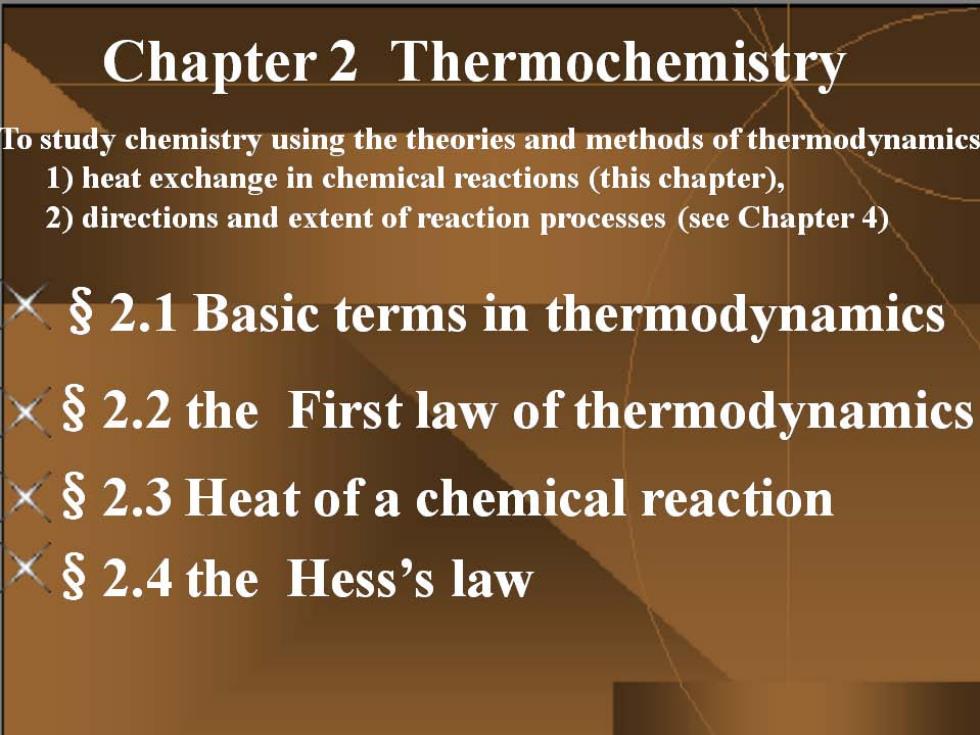
Chapter 2 Thermochemistry To study chemistry using the theories and methods of thermodynamics 1) heat exchange in chemical reactions (this chapter), 2) directions and extent of reaction processes (see Chapter 4) 2.1 Basic terms in thermodynamics § 2.2 the First law of thermodynamics × § 2.3 Heat of a chemical reaction 2.4 the Hess's law
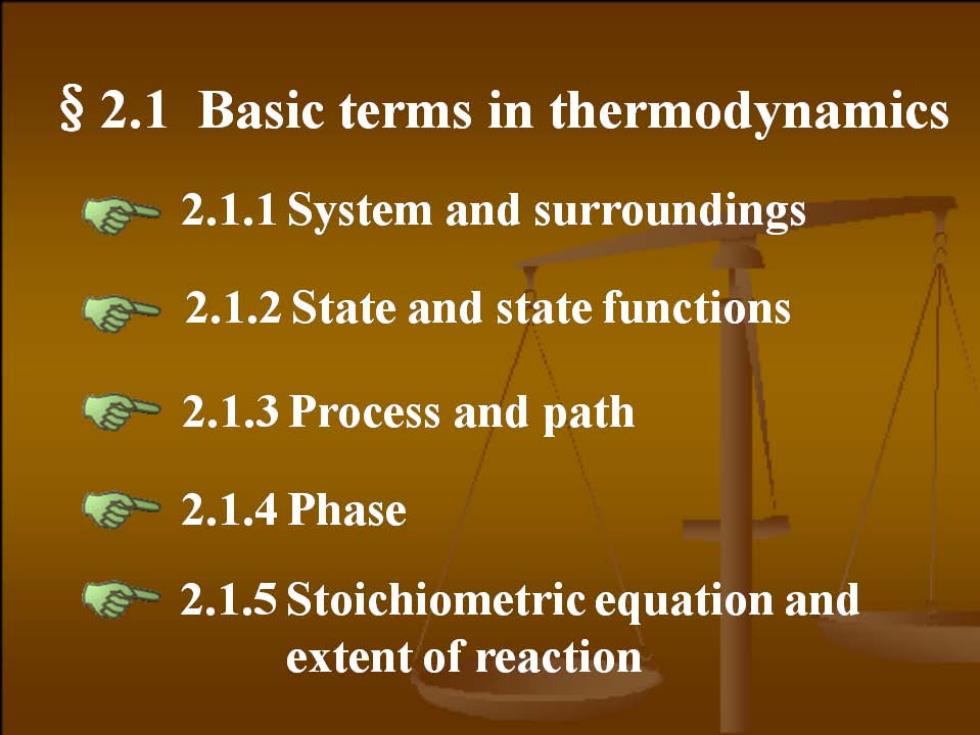
2.1 Basic terms in thermodynamics -2.1.1 System and surroundings 2.1.2 State and state functions =2.1.3 Process and path -2.1.4 Phase -2.1.5 Stoichiometric equation and extent of reaction
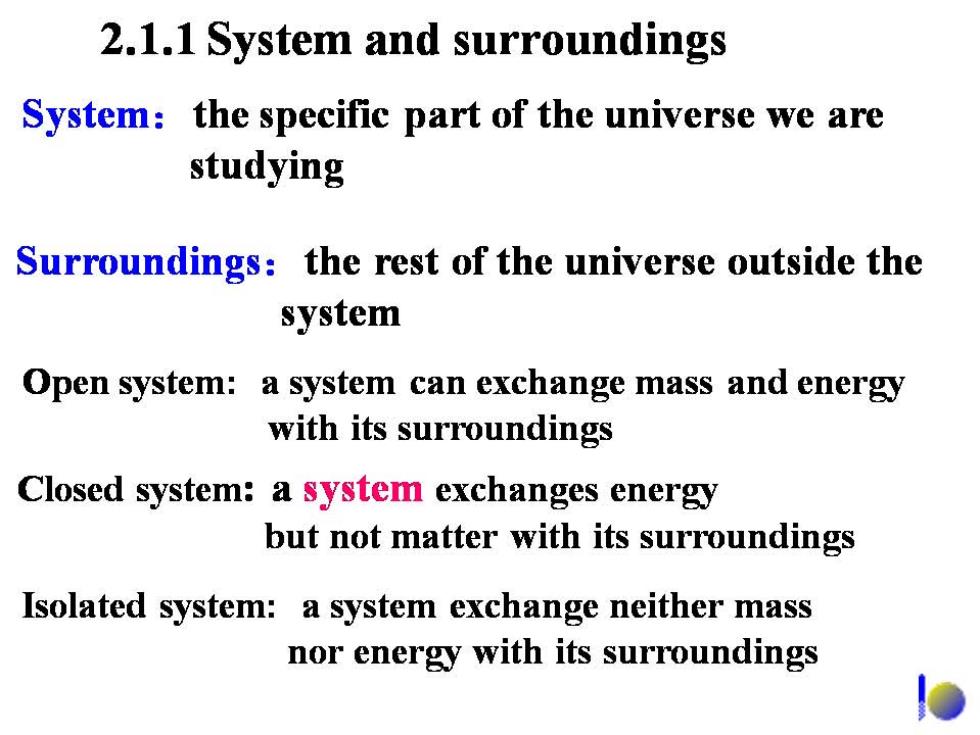
2.1.1 System and surroundings System:the specific part of the universe we are studying Surroundings:the rest of the universe outside the system Open system:a system can exchange mass and energy with its surroundings Closed system:a system exchanges energy but not matter with its surroundings Isolated system:a system exchange neither mass nor energy with its surroundings
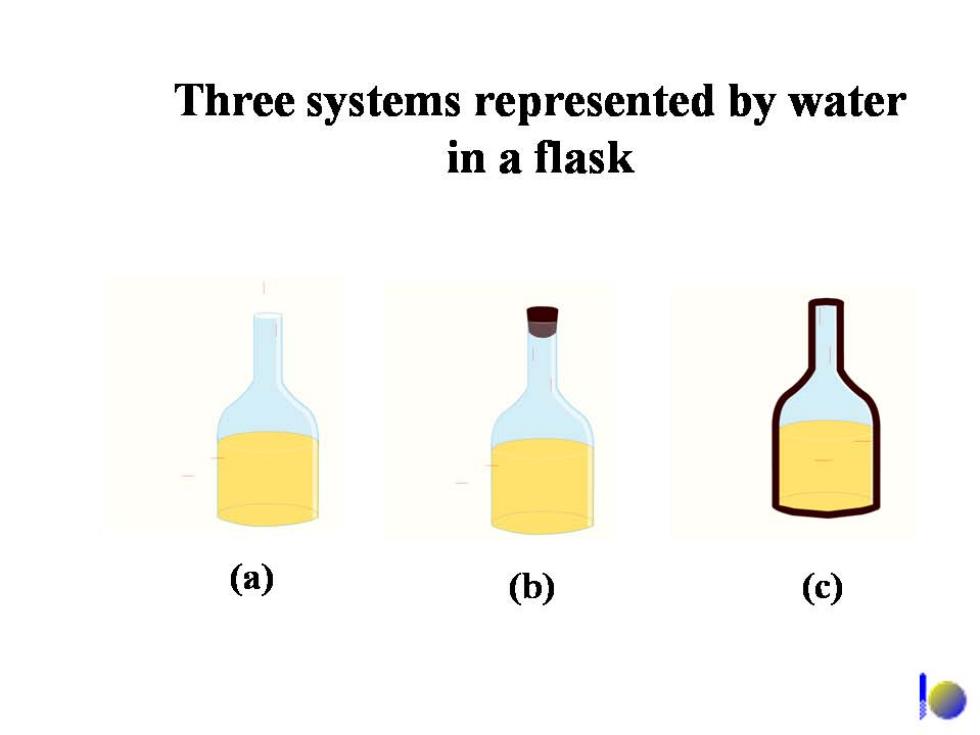
Three systems represented by water in a flask (a) (b) (c)
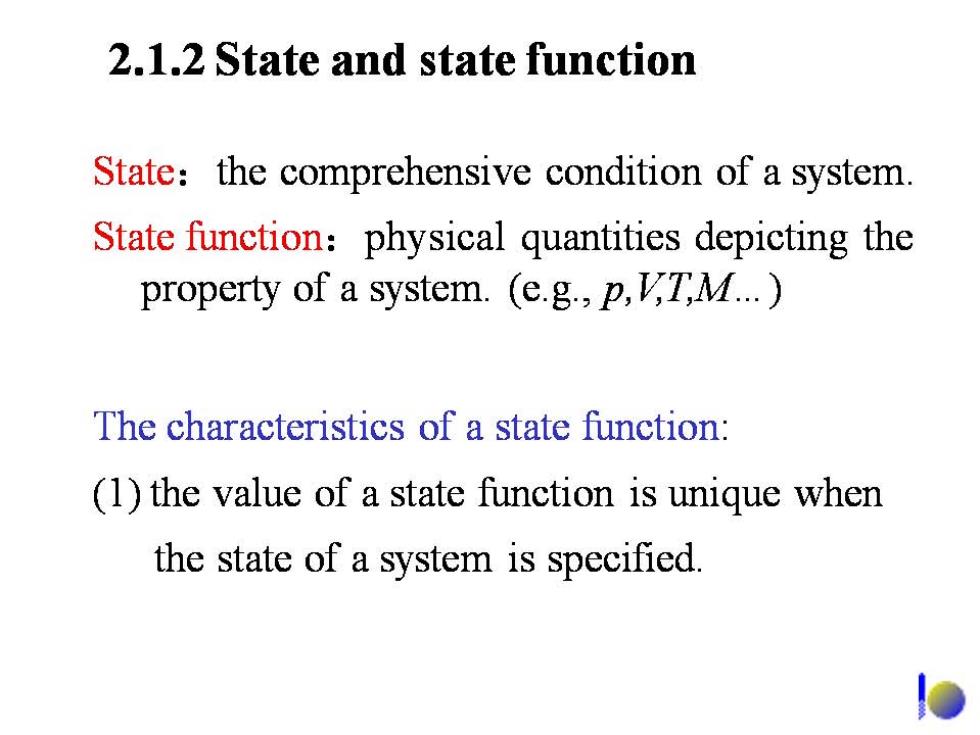
2.1.2 State and state function State:the comprehensive condition of a system. State function:physical quantities depicting the property of a system.(e.g.,p,V,T;M...) The characteristics of a state function: (1)the value of a state function is unique when the state of a system is specified
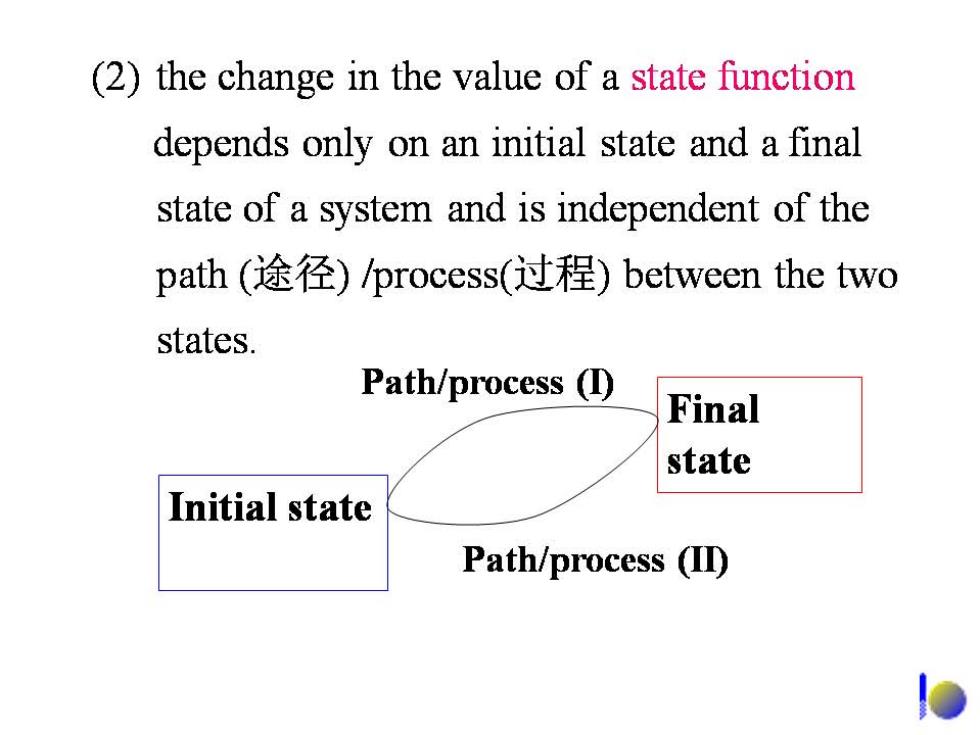
(2)the change in the value of a state function depends only on an initial state and a final state of a system and is independent of the path(途径)process(过程)between the two states. Path/process (D) Final state Initial state Path/process (II)
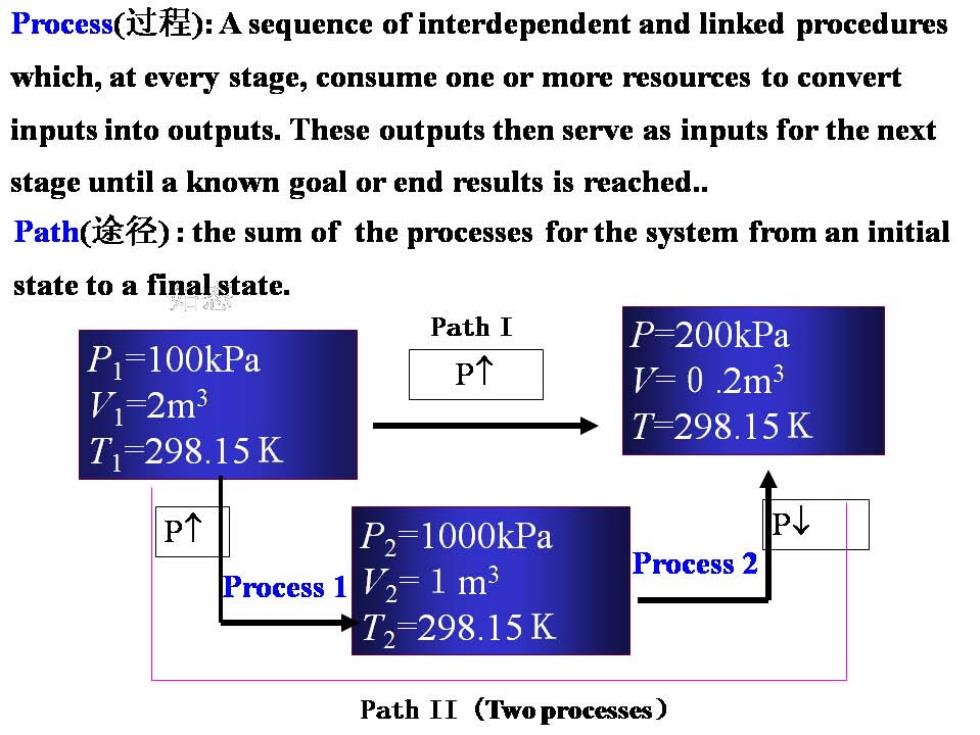
Process(过程):A sequence of interdependent and linked procedures which,at every stage,consume one or more resources to convert inputs into outputs.These outputs then serve as inputs for the next stage until a known goal or end results is reached.. Path(途径):the sum of the processes for the system from an initial state to a final state. Path I P=200kPa P=100kPa P个 /1-2m3 V=0.2m3 T-298.15K T1298.15K PT P2=1000kPa V2=1m3 Process 2 Process 1 T2298.15K Path II (Two processes)
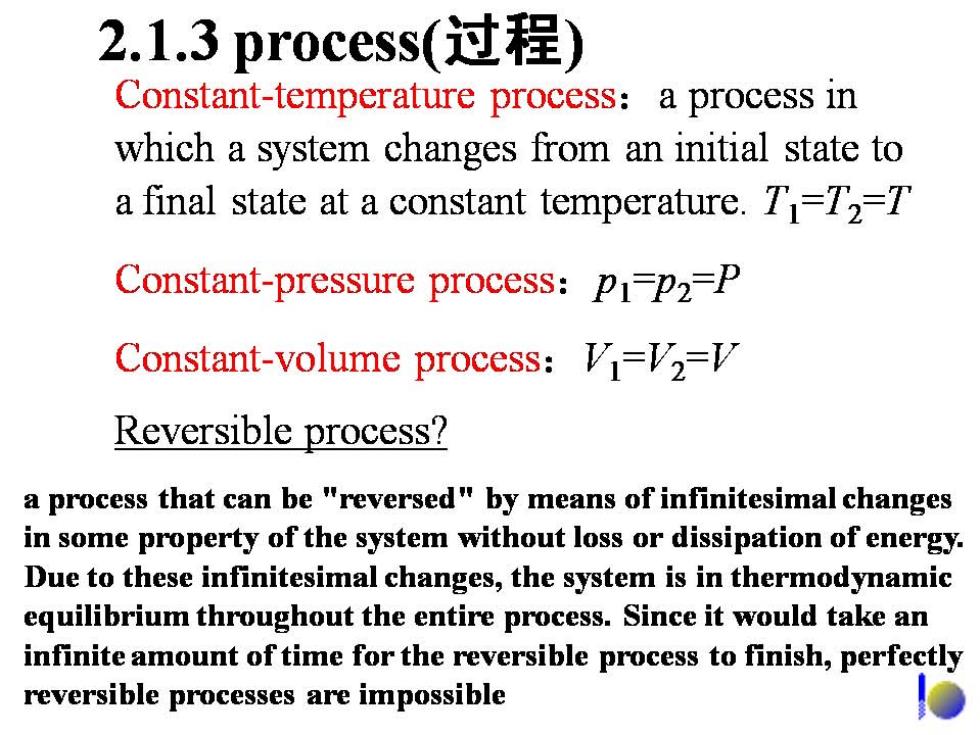
2.1.3 process(过程) Constant-temperature process:a process in which a system changes from an initial state to a final state at a constant temperature.T-72-7 Constant-pressure process:p1-p2=P Constant-volume process:V=1=V Reversible process? a process that can be "reversed"by means of infinitesimal changes in some property of the system without loss or dissipation of energy. Due to these infinitesimal changes,the system is in thermodynamic equilibrium throughout the entire process.Since it would take an infinite amount of time for the reversible process to finish,perfectly reversible processes are impossible
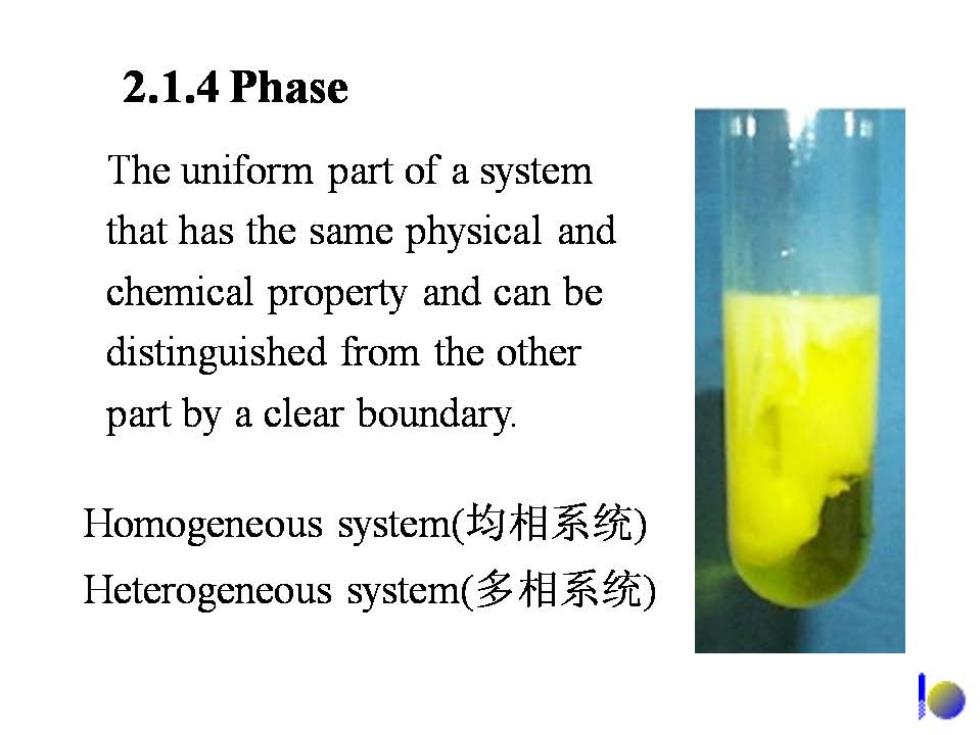
2.1.4 Phase The uniform part of a system that has the same physical and chemical property and can be distinguished from the other part by a clear boundary. Homogeneous system(均相系统) Heterogeneous system(多相系统)

2.1.5 Stoichiometric equation and the extent of a reaction stoichiometric equation: aA+bB→yY+zZ→0=-aA-bB+yY+zZ 0=∑yBB B V B -stoichiometric number of substance B VA=-a,VB=-b,Vy=y,Vz=Z extent of reaction(5,Zeta发音):反应进展的程度 f= △ne_m(5)-ns(0) the unit of g is mol VB VB